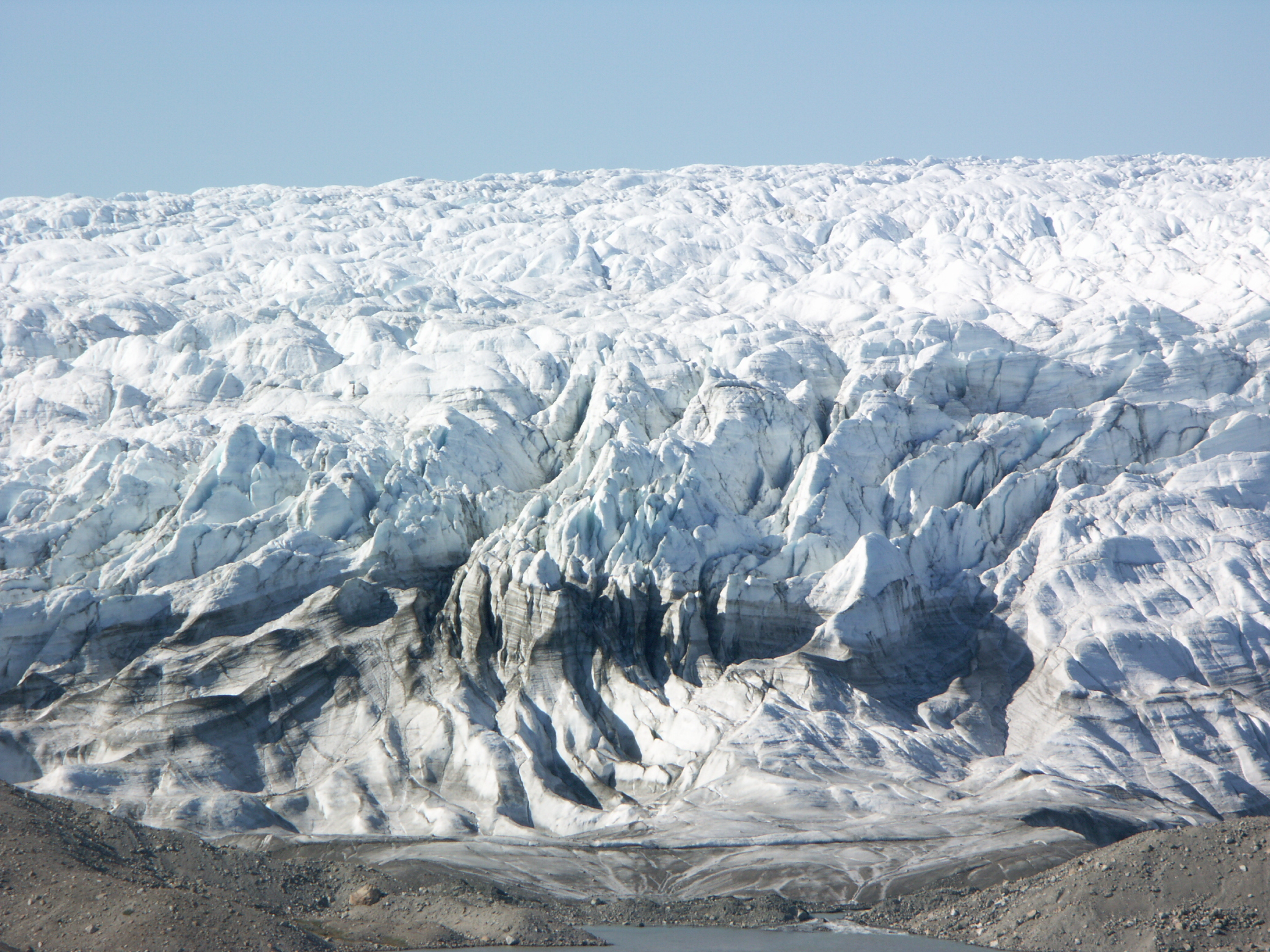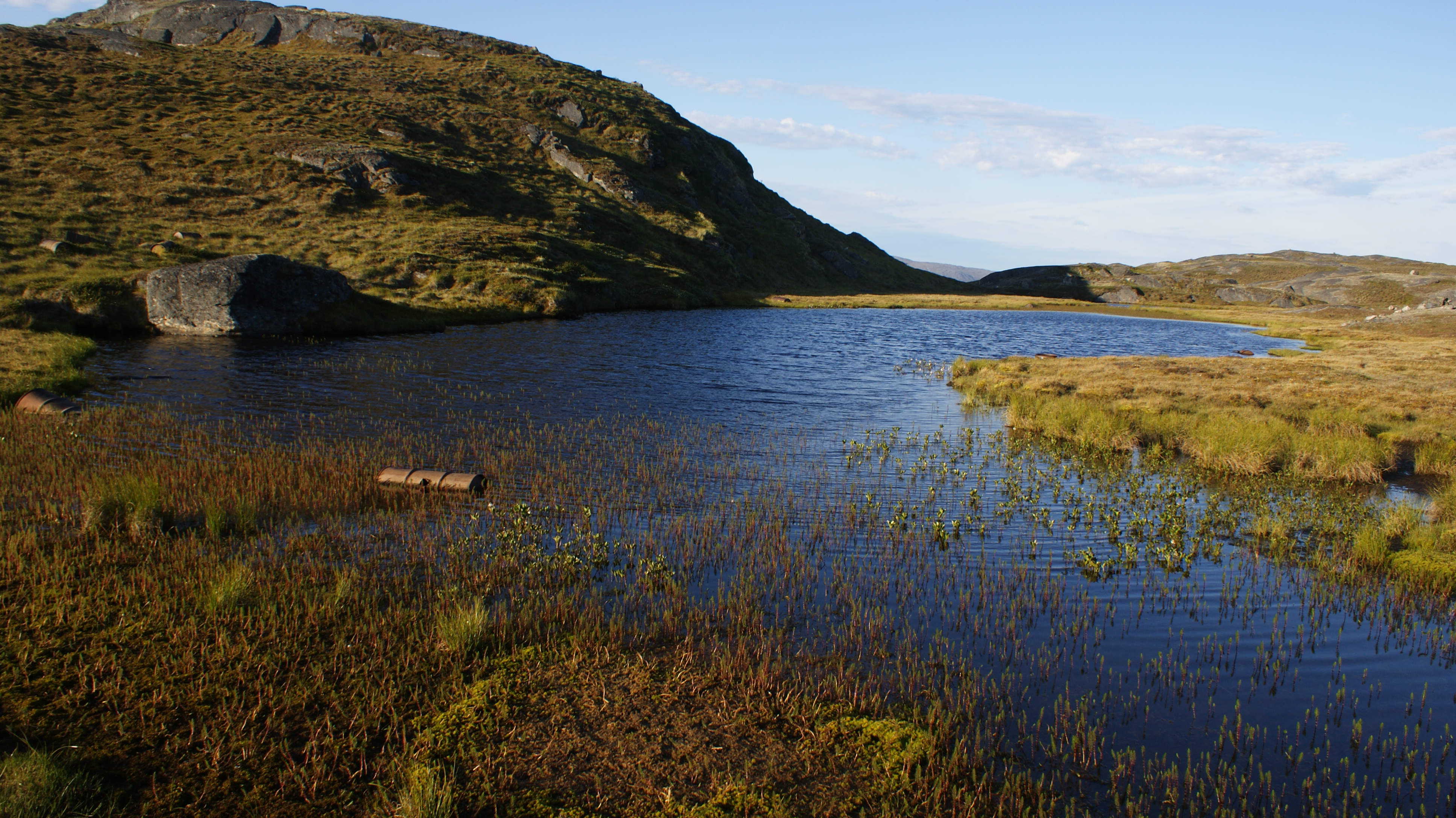|
Sanningasoq
Sanningasoq (old spelling: ''Sáningassoq'') is a large oligotrophic twin lake in central-western , in the |
Isunngua
Isunngua (old spelling: ''Isúngua'') is a highland in the Qeqqata municipality in central-western Greenland, located immediately west of the Greenland Ice Sheet edge. In large part it is covered by the tundra, although in the immediate vicinity of the Sermersuaq ice sheet it gradually becomes exposed, barren, and largely devoid of life. The climate is polar continental, with the area receiving very little rainfall. Isunngua is a calving site for reindeer. Geography Isunngua is notable for a gravel road which leads through it towards the edge of the Greenland Ice Sheet, located east of Kangerlussuaq, and due to trivial approach it remains a popular tourist target, although very few hikers make the journey on foot, or explore the neighboring glaciers. The highland is bounded from the north by the Isunnguata Sermia glacier, from the south by Russell Glacier and Aajuitsup Tasia lake, and from the west by Sanningasoq twin lake. Both glaciers flow to the west from the ice sh ... [...More Info...] [...Related Items...] OR: [Wikipedia] [Google] [Baidu] |
Tarajornitsut
Tarajornitsut is an uninhabited tundra highland in the Qeqqata municipality in central-western Greenland, within the bounds of Kangaamiut dike swarm. The highland has many lakes, shallow valleys, hills, and wetlands, with plentiful wildlife, such as arctic geese. It is also a major calving ground for reindeer. In the future the area will become a protected nature reserve. The ''Polar Route'' from Sisimiut to Kangerlussuaq ends in Tarajornitsut, on the shore of Kangerlussuaq Fjord. Geography Tarajornitsut is located north of Kangerlussuaq Fjord, behind the dike scarp bounding the fjord from the northwest. The eastern part of the wide highland region of numerous lakes (some of which are saline), wet valley depressions, and mostly barren hills, begins immediately to the north of Kangerlussuaq, and is bounded from the east by the large Sanningasoq lake. The long Tasersuaq lake in the west separates the highland from the Pingu mountain group halfway between Davis Strait and the G ... [...More Info...] [...Related Items...] OR: [Wikipedia] [Google] [Baidu] |
Aajuitsup Tasia
Aajuitsup Tasia (old spelling: ''Aujuitsup Tasia'') is a large lake in central-western Greenland, in the Qeqqata municipality. It is located approximately northeast of Kangerlussuaq. It is of elongated oval shape, with its western shore at and its eastern shore at . Aajuitsup Tasia is an oligotrophic lake of depth, covering an area of 1,350ha. Geography The 2x10 km lake is separated from the Akuliarusiarsuup Kuua valley and Kangerlussuaq in the south by a low tundra ridge − part of the Kangaamiut dike swarm. To the west lies a sibling Sanningasoq twin lake. To the north-east lies the wide highland of Isunngua. The surface of Aajuitsup Tasia is almost level with the surface of the neighboring meltwater lake, an outflow of Russell Glacier. The altitude differential produces an outflowing boggy stream flowing from Aajuitsup Tasia to the unnamed meltwater lake, allowing Aajuitsup Tasia to retain its freshwater character despite being directly in the glacier outflow path. ... [...More Info...] [...Related Items...] OR: [Wikipedia] [Google] [Baidu] |
Akuliarusiarsuup Kuua
Akuliarusiarsuup Kuua ( da, Sandflugtdalen) is a river and valley of the same name in the Qeqqata municipality in central-western Greenland. Its source is the meltwater outflow from Russell Glacier, an outflow of the Greenland ice sheet. The river is a tributary of Qinnguata Kuussua, the main river in the Kangerlussuaq area. For most of its run, the river flows very slowly through the sandur basin of the valley, forming meanders amongst large fields of glacial silt quicksand. The climate is polar continental, with the area receiving very little rainfall. Geography Several meltwater outflow streams from the base of the Russell Glacier () form the Akuliarusiarsuup Kuua river. The valley is long, oriented east-north-east to west-south-west. From the north it is bounded by a low-lying (300-400m) ridge − part of the Kangaamiut dike swarm − separating it from large glacial lakes of Aajuitsup Tasia and Sanningasoq. On the southern side the boundary is formed by an exposed, ... [...More Info...] [...Related Items...] OR: [Wikipedia] [Google] [Baidu] |
Greenland
Greenland ( kl, Kalaallit Nunaat, ; da, Grønland, ) is an island country in North America that is part of the Kingdom of Denmark. It is located between the Arctic and Atlantic oceans, east of the Canadian Arctic Archipelago. Greenland is the world's largest island. It is one of three constituent countries that form the Kingdom of Denmark, along with Denmark and the Faroe Islands; the citizens of these countries are all citizens of Denmark and the European Union. Greenland's capital is Nuuk. Though a part of the continent of North America, Greenland has been politically and culturally associated with Europe (specifically Norway and Denmark, the colonial powers) for more than a millennium, beginning in 986.The Fate of Greenland's Vikings , by Dale Mackenzie Brown, ''Archaeological Institute of America'', ... [...More Info...] [...Related Items...] OR: [Wikipedia] [Google] [Baidu] |
Kangaamiut Dike Swarm
The Kangaamiut dike swarm (old spelling: ''Kangâmiut'') is a 2.04 billion year old dike swarm located in the Qeqqata region of western Greenland. The dikes cut Archean orthogneisses and are exposed along approximately of the coast and a similar distance up to the inland ice to the east, covering an area of about . To the north it is bounded by the paleoproterozoic Ikertooq shear zone (old spelling: ''Ikertôq'') while to the south the boundary is gradational with a gradual reduction in the density of dikes. The dike swarm was intruded during a phase of extensional tectonics. They were later deformed during the Nagssugtoqidian orogeny The Nagssugtoqidian orogeny was a late Paleoproterozoic mountain-building event that affected Greenland during the period 1.91 to 1.77 Ga. The orogenic belt formed during this event marks the northern boundary of the mainly Archaean North Atlan ..., with the amount of strain increasing towards the Iqertooq shear zone. References {{coord m ... [...More Info...] [...Related Items...] OR: [Wikipedia] [Google] [Baidu] |
Sarfannguit
Sarfannguit (old spelling: ''Sarfannguaq / Sarfánguaq'') is a settlement in the Qeqqata municipality in central-western Greenland. Its population was 96 in 2020. The settlement was founded in 1843.Qeqqata Municipality The town is located within the Aasivissuit – Nipisat , inscribed on the World Heritage List in 2018 for its outstanding archeological sites representing the human occupation of Greenland for over 4000 years. [...More Info...] [...Related Items...] OR: [Wikipedia] [Google] [Baidu] |
Greenland Ice Sheet
The Greenland ice sheet ( da, Grønlands indlandsis, kl, Sermersuaq) is a vast body of ice covering , roughly near 80% of the surface of Greenland. It is sometimes referred to as an ice cap, or under the term ''inland ice'', or its Danish equivalent, ''indlandsis''. An acronym, GIS, is frequently used in the scientific literature. It is the second largest ice body in the world, after the Antarctic ice sheet. The ice sheet is almost long in a north–south direction, and its greatest width is at a latitude of 77°N, near its northern margin. The average thickness is about and over at its thickest point. In addition to the large ice sheet, smaller ice caps (such as Maniitsoq and Flade Isblink) as well as glaciers, cover between around the periphery. The Greenland ice sheet is adversely affected by climate change. It is more vulnerable to climate change than the Antarctic ice sheet because of its position in the Arctic, where it is subject to the regional amplification o ... [...More Info...] [...Related Items...] OR: [Wikipedia] [Google] [Baidu] |
Russell Glacier (Greenland)
Russell Glacier ( da, Russells Gletscher) is a glacier in the Qeqqata municipality in central-western Greenland. It flows from the Greenland ice sheet ( kl, Sermersuaq) in the western direction. The front of the glacier is located east of Kangerlussuaq. It is active, advancing every year, and, due to easy access from Kangerlussuaq, it remains a popular place for tourists to visit. Geography The ice sheet outflow ending in Russell Glacier is bounded on the north by the tundra highland of Isunngua and on the south by an exposed, barren, flattened ridge of Akuliarusiarsuk. Several meltwater outflow streams from the base of the glacier form the Akuliarusiarsuup Kuua river, which flows west-southwest towards Kangerlussuaq. The sandur basin of the outflow river forming the valley of the same name ( da, Sandflugtdalen) is very shallow; shallow enough to form quicksand fields several kilometers long. Directly to the west of the glacier is a large lake, the 2x10km Aajuitsup Tasia. ... [...More Info...] [...Related Items...] OR: [Wikipedia] [Google] [Baidu] |
Tundra
In physical geography, tundra () is a type of biome where tree growth is hindered by frigid temperatures and short growing seasons. The term ''tundra'' comes through Russian (') from the Kildin Sámi word (') meaning "uplands", "treeless mountain tract". There are three regions and associated types of tundra: Arctic tundra, alpine tundra, and Antarctic tundra. Tundra vegetation is composed of dwarf shrubs, sedges, grasses, mosses, and lichens. Scattered trees grow in some tundra regions. The ecotone (or ecological boundary region) between the tundra and the forest is known as the tree line or timberline. The tundra soil is rich in nitrogen and phosphorus. The soil also contains large amounts of biomass and decomposed biomass that has been stored as methane and carbon dioxide in the permafrost, making the tundra soil a carbon sink. As global warming heats the ecosystem and causes soil thawing, the permafrost carbon cycle accelerates and releases much of these soil-contained g ... [...More Info...] [...Related Items...] OR: [Wikipedia] [Google] [Baidu] |
Oligotrophic
An oligotroph is an organism that can live in an environment that offers very low levels of nutrients. They may be contrasted with copiotrophs, which prefer nutritionally rich environments. Oligotrophs are characterized by slow growth, low rates of metabolism, and generally low population density. Oligotrophic environments are those that offer little to sustain life. These environments include deep oceanic sediments, caves, glacial and polar ice, deep subsurface soil, aquifers, ocean waters, and leached soils. Examples of oligotrophic organisms are the cave-dwelling olm; the bacterium " ''Candidatus'' Pelagibacter communis", which is the most abundant organism in the oceans with an estimated 2 × 1028 individuals in total; and the lichens with their extremely low metabolic rate. Etymologically, the word "oligotroph" is a combination of the Greek adjective ''oligos'' (ὀλίγος) meaning "few" and the adjective ''trophikos'' (τροφικός)) meaning "feeding". Plant adaptatio ... [...More Info...] [...Related Items...] OR: [Wikipedia] [Google] [Baidu] |






